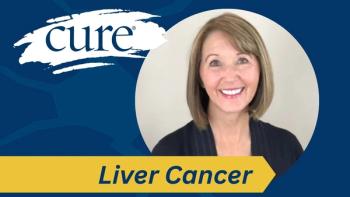
Understanding Metastasis
How a better understanding of cancer metastasis is suggesting better treatment approaches.
Evidence presented on Saturday at SABCS emphasized that breast cancer metastasis is even more complicated than previously thought. However, researchers are making progress in understanding its complexities and are devising new treatments and treatment strategies based on their improved understanding.
Memorial
Sloan-Kettering
Cancer
Center
A presentation by Larry Norton, MD, of , highlighted how modern molecular science is challenging what is known about cancer. One new concept is the “self-seeding” of tumor cells, the idea that tumor cells that have metastasized to another site in the body can return to the primary tumor. This self-seeding by these more aggressive metastatic cells makes the primary tumor stronger by helping it develop more blood vessels and generally promoting its growth.
Memorial
Sloan-Kettering
Cancer
Center
According to a presentation by Joan Massague, PhD, of , there are three things to be considered in understanding how cancer spreads: the steps, the sites, and the course. He explained that the steps in metastasis are a complicated process involving four different types of tumor genes. Consideration of the sites means examining attributes of the various organs to which cancer might spread. For example, the characteristics needed for a malignant cell to penetrate bone and form a tumor are different from those required to infiltrate the brain.
The course refers to the time that elapses from when a malignant cell arrives at a distant organ to when a tumor forms there. Massague pointed out that in breast cancer, this process can take years, even decades, whereas in lung cancer, for example, it usually takes place in weeks to months.
CURE.
Another complication is that cancer cells have the ability to change constantly, Kornelia Polyak, MD, PhD, of Dana-Farber Cancer Institute, told Furthermore, breast cancer involves a multitude of abnormalities. Genetically, it looks like “a jigsaw puzzle with its pieces scrambled,” Polyak said. “So when we treat distant metastases, we should not presume that they will all look like the primary tumor, because it seems that they have different features.”
She added that according to research results presented on Friday, the characteristics of the cells still circulating within the body may differ from both those of the primary tumor and those of the distant metastases, so cells from all three locations should be examined. These various kinds of cells may require different kinds of treatment.
Polyak explained that traditionally, tumor samples taken from distant metastases have not been characterized except to say they are related to the primary tumor. “I think that will change, because we see that we can’t effectively treat patients with metastatic disease without understanding those tumor cells that are in the metastases. We have to develop protocols or procedures so that patients would go have a biopsy, because it may have medical benefit if we understand how those cells are different from the [primary] tumor.”
It may be five to 10 years until some of this new information can be used in the clinic, according to Polyak, and that will depend partially on how quickly new drugs can be developed. “There are lots of interesting new targets, but for them to go through the validation process just takes a lot of time.” Many targets that look promising in animal and laboratory studies do not succeed in human patients, she added.
University
California
San Francisco
CURE.
However, improved drugs directed at existing targets are already providing more treatment options for metastatic breast cancer. In terms of potential treatments for metastatic disease, “There is just a whole explosion of drugs out there,” Hope Rugo, MD, of the of at , said in an interview with
Tyler
Cancer
Center
One of those drugs is trastuzumab-DM1 (T-DM1). According to data from a phase II trial presented by Svetislava Vukelja, MD, of , T-DM1 has anti-tumor activity in patients with previously treated HER2-positive metastatic breast cancer, including activity in patients who have been pretreated with trastuzumab or lapatinib.
CURE,
Rugo was one of the investigators in the trial, and she explained, in an interview with that T-DM1 is Herceptin linked to a chemotherapy drug that acts as a toxin. It works by taking advantage of the fact that the HER2 receptor binds to Herceptin and brings it into the cell. “So if the Herceptin has a toxin attached to it, you are delivering the toxic payload straight to the cancer cell. It’s called a smart-bomb approach.” Rugo said T-DM1 has been so effective in treating patients whose disease has progressed despite treatment, her team is looking into the possibility of petitioning the Food and Drug Administration to allow compassionate use of the drug after it enters phase III trials.
Rugo added that oncologists are exploring whether existing drugs could be used in new ways. “Maybe in the future, when we’re combining biologic agents, we can combine oral agents with an antibody. That’s very encouraging, because these are drugs that are already out there,” she concluded.
Read more of CURE's coverage of the 31st annual San Antonio Breast Cancer Symposium at




